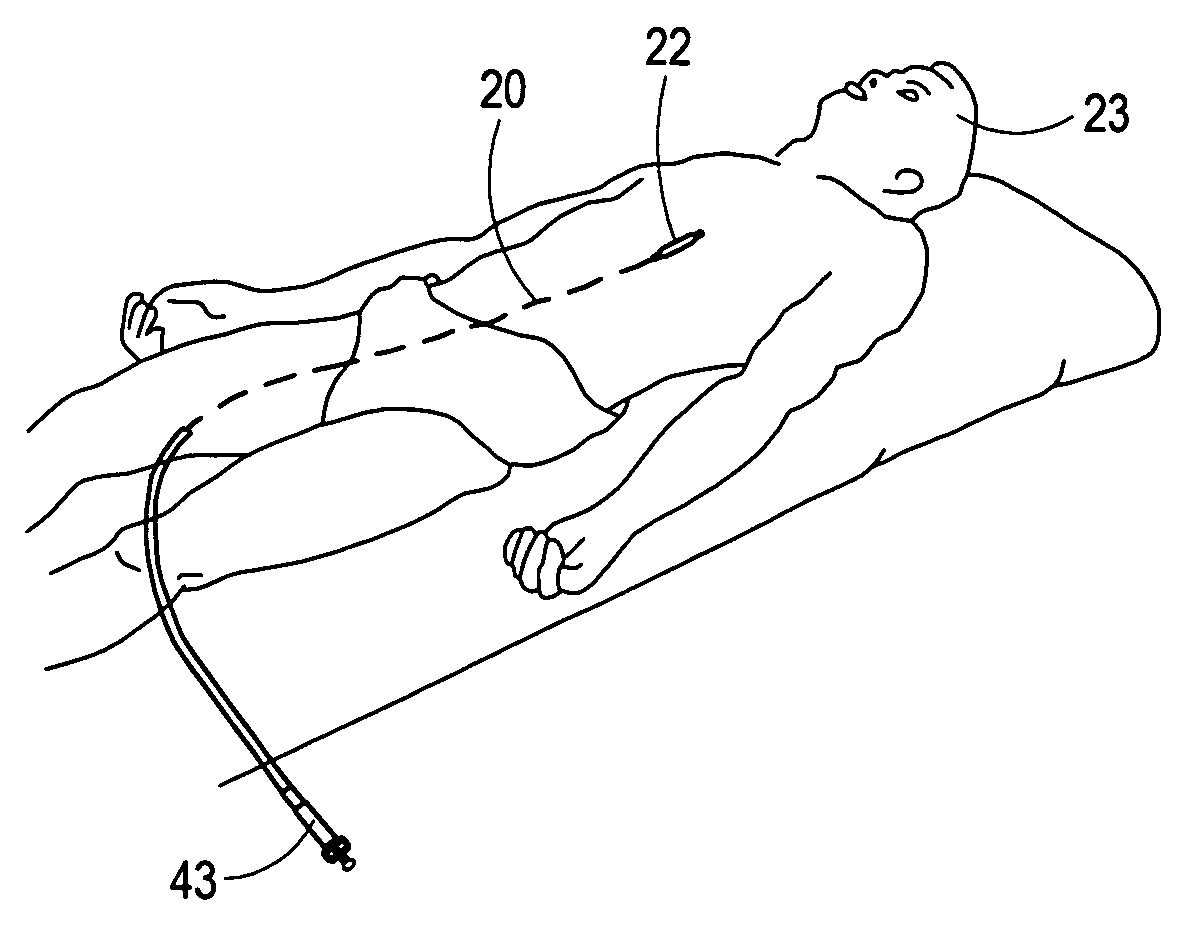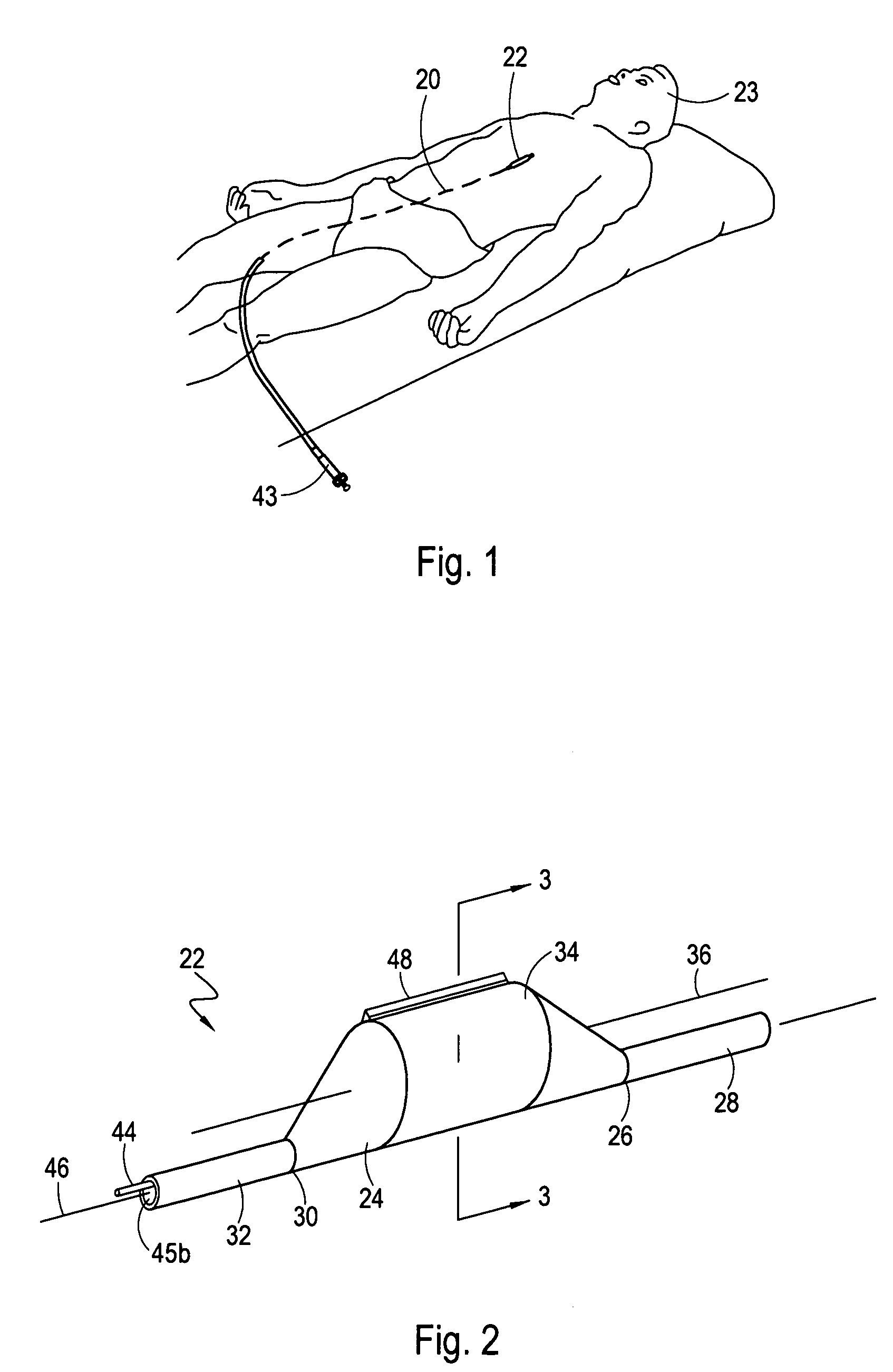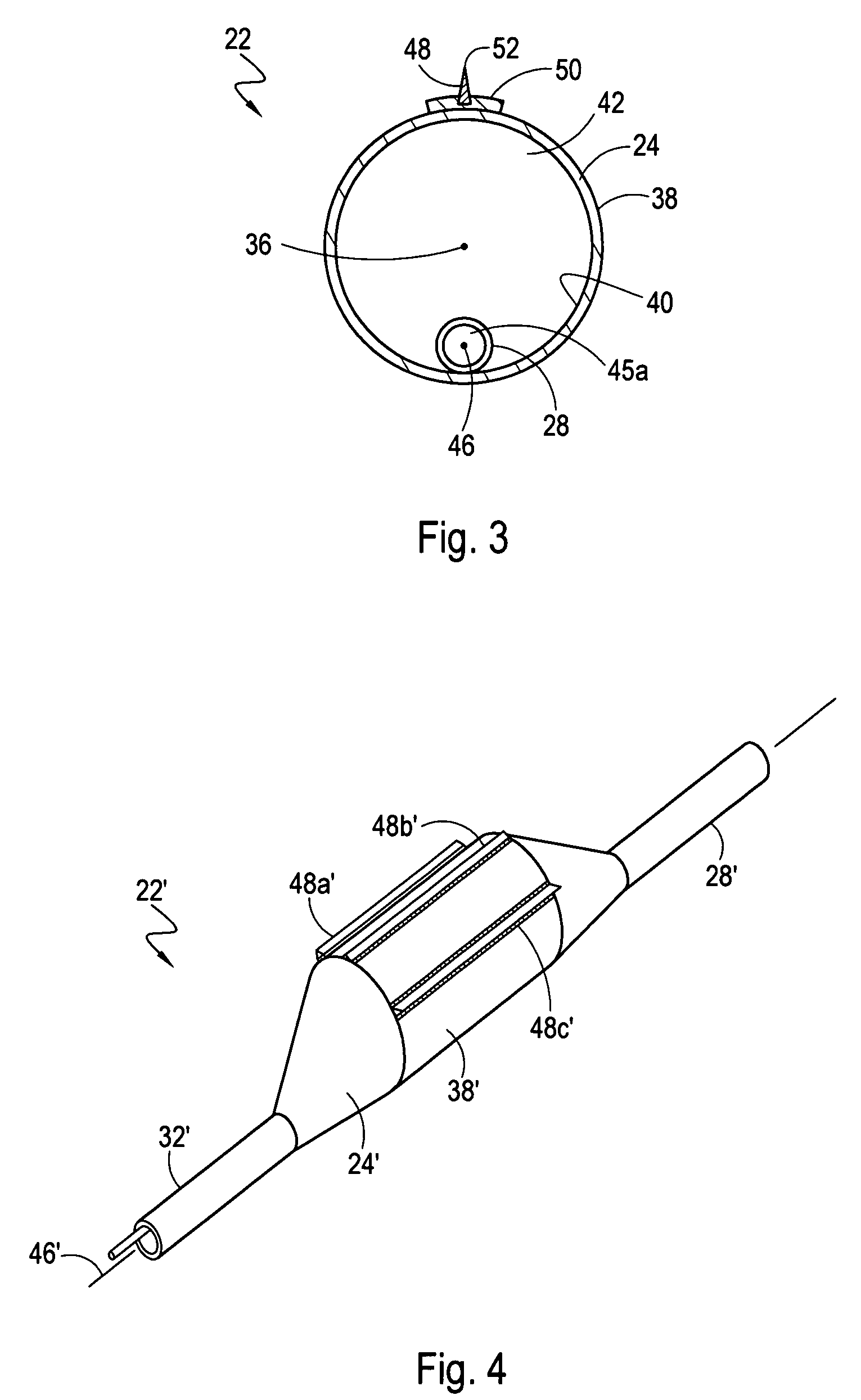Directional cutting balloon
a directional cutting and catheter technology, applied in the field of medical catheters and medical catheter procedures, can solve the problems of high rate of restnosis in treatment protocols, unsuitability of devices designed to incise uniformly around the circumference of the vessel,
- Summary
- Abstract
- Description
- Claims
- Application Information
AI Technical Summary
Benefits of technology
Problems solved by technology
Method used
Image
Examples
Embodiment Construction
[0019]Referring initially to FIG. 1, a catheter 20 having a cutting balloon 22 is shown for performing a medical procedure at an internal treatment site of a patient 23. More specifically, the catheter 20 is shown positioned to treat a lesion in an upper body artery of a human patient. Although the catheter 20 is capable of performing a medical procedure in an upper body artery such as a coronary artery, those skilled in the pertinent art will quickly recognize that the use of the catheter 20 as herein described is not limited to use in a specific artery, but, instead can be used in vascular conduits and other ductal systems (e.g. a bile duct or urinary track) throughout the human body. Moreover, although FIG. 1 shows the catheter 20 used in a human body, it is to be appreciated that the catheter 20 can also be used in non-humans (e.g. animals) if desired. Functionally, the catheter 20 is configured to incise a biological material from within a body conduit. As used herein, the term...
PUM
 Login to View More
Login to View More Abstract
Description
Claims
Application Information
 Login to View More
Login to View More - R&D
- Intellectual Property
- Life Sciences
- Materials
- Tech Scout
- Unparalleled Data Quality
- Higher Quality Content
- 60% Fewer Hallucinations
Browse by: Latest US Patents, China's latest patents, Technical Efficacy Thesaurus, Application Domain, Technology Topic, Popular Technical Reports.
© 2025 PatSnap. All rights reserved.Legal|Privacy policy|Modern Slavery Act Transparency Statement|Sitemap|About US| Contact US: help@patsnap.com



